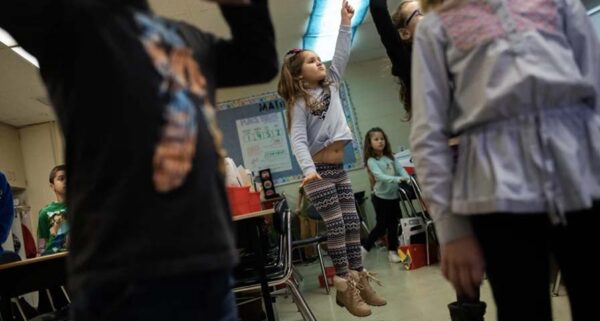Originally published March 3, 2023 by Education Week.
By Sarah D. Sparks
Sharie Murray noticed the benefits of getting kids moving during the pandemic.
The K-3 special education teacher and her colleagues at North Elementary School in Birch Run, Mich., started to use short exercise videos to keep students occupied during waiting times over Zoom, but Murray said getting students’ blood moving also helped them focus more during the virtual class periods.

“It was amazing,” Murray said. “The (activity) break allows the kids to escape a bit, use their energy to perform a dance or workout piece or whatever, and then the kids are able to regroup and then focus on the task at hand. And once we were able to get back into the norm in class, we wanted to pilot it” in person.
North Elementary and others in the Birch Run area school district have been ramping up short, four to five-minute activity breaks as part of InPACT, short for Interrupting Prolonged sitting with ACTivity, a University of Michigan-Ann Arbor program focused on boosting physical activity in classrooms to improve students’ fitness, attention, and mental health. In the process, researchers and educators hope to make the common class activity break more high-impact.
“This isn’t something new, but (schools) are just not doing activity breaks consistently and they’re running into too many barriers,” said Rebecca Hasson, an associate professor of movement science and the director of the Childhood Disparities Research Laboratory at the University of Michigan-Ann Arbor. “There are so many things being put on a teacher’s plate right now. Sometimes classroom activity breaks and physical activity programs are just one more thing that teachers have to fit into their curriculum, one more thing that they have to try to organize.”
Boost Student Wellness with the IHT ZONE heart rate monitor:
[contact-form-7 id=”3054″ title=”How’d you find us?”]


